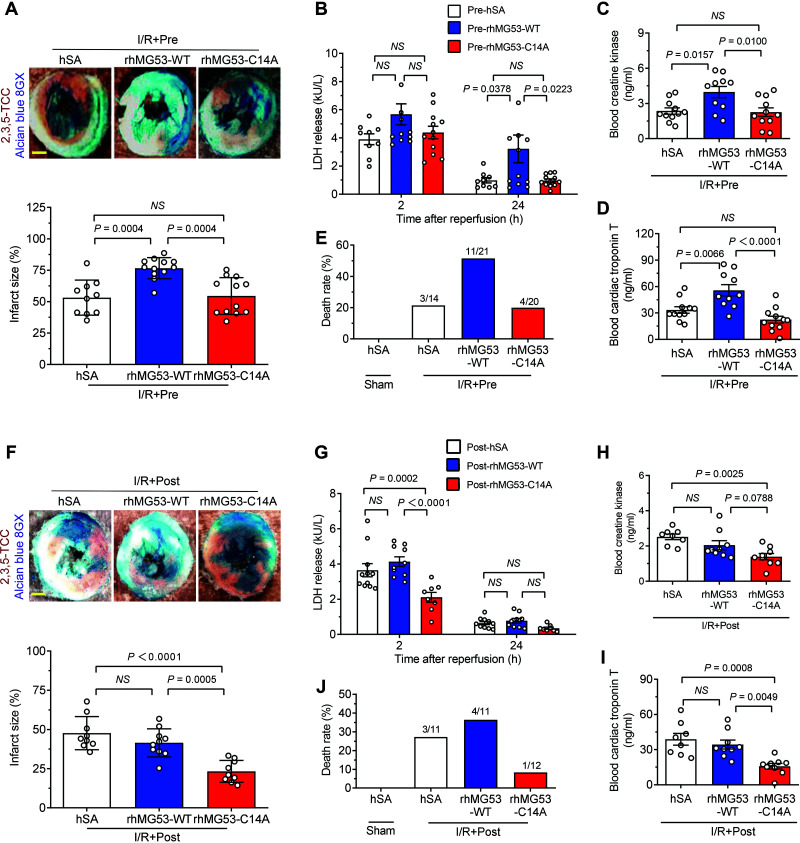Figure 3.
rhMG53-C14A is beneficial, but rhMG53-WT is detrimental, for diabetic hearts subjected to I/R injury. A–E: Representative images and statistical data of myocardial infarct size (n = 10, 12, and 12) (A), serum LDH levels (n = 9, 12, and 12) (B), blood CK (n = 11, 10, and 11) (C), cTnT levels (n = 11, 10, and 11) (D), and mortality (n = 14, 21, and 20) (E) in diabetic db/db mice subjected to I/R in vivo with hSA, rhMG53-WT, or rhMG53-C14A pretreatment, respectively. F–J: Representative photographs and statistical data of myocardial infarct size (n = 9, 10, and 9) (F), serum LDH levels (n = 11, 10, and 8) (G), blood CK (n = 8, 9, and 9) (H), cTnT levels (n = 8, 9, and 9) (I), and mortality (n = 11, 11, and 12) (J) in diabetic db/db mice subjected to I/R in vivo with hSA, rhMG53-WT, or rhMG53-C14A posttreatment, respectively. Scale bar is 1 mm. All data are presented as mean ± SEM. Statistical analysis was conducted by one-way ANOVA with Tukey multiple comparisons test (A, C, D, F, H, and I) or two-way ANOVA with Tukey multiple comparisons test (B and G). NS, not significant.

